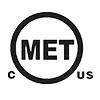Reflective blankets utilize reflective materials to bounce heat back to the source. This provides warmth along with protection from the elements. But when it comes to reflective blankets, you have two main options – standard reflective blankets and heat reflective blankets engineered for survival and emergency use. What’s the difference, and when should you choose each type? We’ll break it down in this reflective blanket comparison guide.
Reflective Blankets
Reflective blankets are made using materials like metallized polyester film or foil laminate fabrics. This creates a mirror-like surface that reflects radiant heat back to the source. They come in various sizes and weights.
Benefits for Purchasers:
Retain heat – Reflect body heat back to the user.
Reusable – Can be folded and stored for repeated use.
Lightweight – Weigh just a few ounces for portability.
Waterproof – Provide protection from rain and snow.
Windproof – Block penetration of wind and drafts.
Versatile sizes – Available from compact up to jumbo.
Decorative – Come in colors like gold, silver, chrome, and more.
Ideal Uses:
Camping – Reflect campfire or body heat, use as groundcover.
Outdoor events – Concerts, races, and nighttime activities.
Agriculture – Protect plants from frost overnight.
Home décor – Create an industrial chic look.
Pets – Insulate kennels, beds, and outdoor shelters.
Benefits for Suppliers:
Inexpensive materials – Metallized polyester film is affordable.
Simple manufacturing – Just metalize fabric in sheets or rolls.
Lightweight – Low shipping cost compared to textiles.
Custom sizes – Offer a range from compact to oversize.
Decor niche – Fun accent for home décor and gifting.
Heat Reflective Blankets
Heat reflective blankets are ultra-thin emergency blankets designed to reflect body heat. They are made of materials like polyethylene sheeting or spun synthetic fibers with a metallic coating.
Benefits for Purchasers:
Retain body heat – Reflective metallic coating prevents up to 90% of heat loss.
Waterproof and windproof – Provide protection from wet, windy conditions.
Ultra lightweight – Typically around 1-2 oz for maximum portability.
Compact – Can fold up small enough to stash in bags, packs, or pockets.
Multipurpose – Can be used as a blanket, shelter, tarp, and more.
Inexpensive – Typically under $5 per blanket.
Ideal Uses:
Emergency first aid – Treat hypothermia or shock.
Survival situations – Getting stranded during disasters, accidents, storms.
Outdoor recreation – Have for camping, hiking, festivals, boating, hunting.
Disaster preparedness – Kits for home, car, office, bug out bag.
Disaster response – Hand out to victims of emergencies and accidents.
Benefits for Suppliers:
Simple materials – Just metallized plastic sheeting.
Easy manufacturing – Mass produce at high volumes.
Low cost – Extremely inexpensive to manufacture per unit.
Lightweight – Saves substantially on shipping costs.
Broad market – Consumers, governments, NGOs, emergency preppers.
Custom printing – Brand logos, emergency instructions.
Comparing Reflective and Heat Reflective Blankets
While both utilize reflective materials, key differences include:
Purpose – Reflective blankets are for everyday use. Heat reflective blankets are for survival and first aid.
Durability – Reflective blankets are reusable long-term. Heat reflective blankets are more delicate.
Size – Reflective come in various sizes. Heat reflective are one-size emergency blankets.
Performance – Reflective have higher durability. Heat reflective offer max portability.
Weight – Heat reflective blankets are lighter and more compact.
In summary, reflective blankets provide reliable everyday heat reflection while ultra-portable heat reflective blankets are purpose-built for emergency warmth and survival.
YooShing offers a wide selection of reflective and heat reflective blankets to meet any need. Get the best value with our factory direct pricing. Learn more about our blanket offerings at www.yooshing.com!














